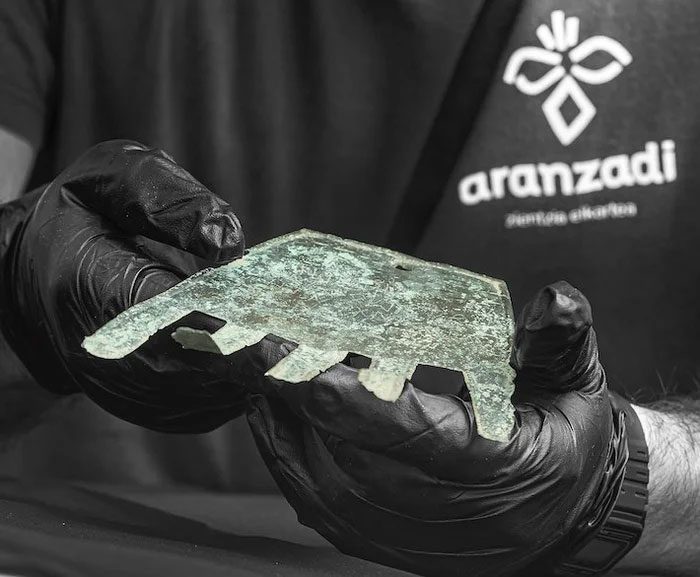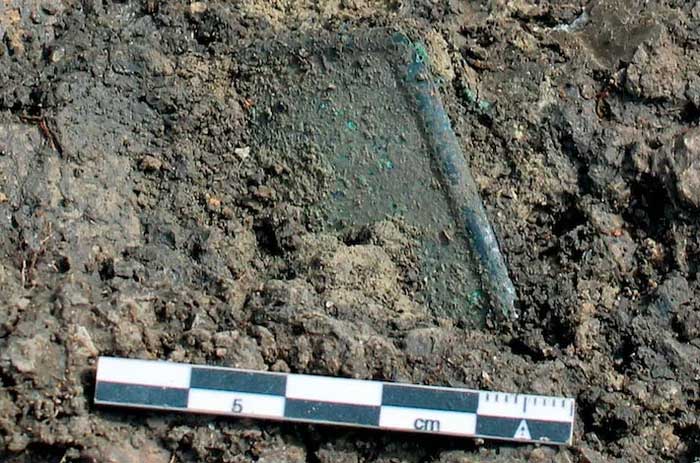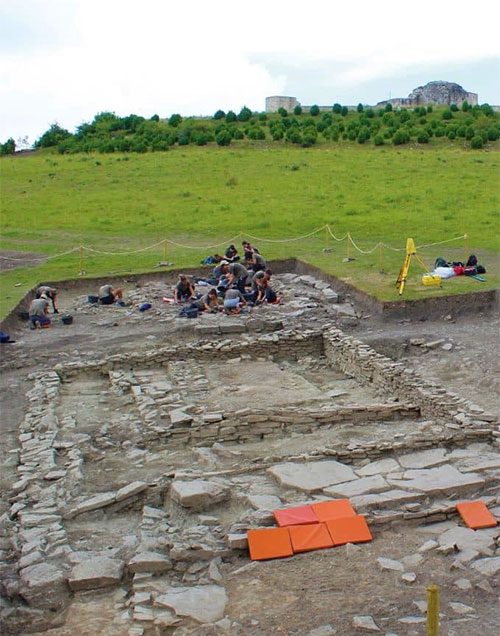Archaeologists from the Aranzadi Science Society discovered this artifact in 2021 among the ruins of an ancient village in northern Spain.
Artifact restorer Carmen Usúa stated: “When I began cleaning the mud off a bronze hand ornament from an Iron Age village in January, I found a series of lines and then a series of dots. I immediately realized that I was facing a piece with writing.”
This small text fragment—just 40 characters long—reveals a hidden chapter in the story of an as-yet-unknown language: Basque, spoken by native people in the area that is now northern Spain and southwestern France. Linguists refer to Basque as a language isolate, meaning it does not share a common origin with any known language groups.
Until recently, historians believed that Basque speakers did not develop a written language until they came into contact with the Romans who invaded their lands. However, this bronze hand reveals that by the time the Romans arrived, the Basque people already had their own writing system, developed from a more widely used system on the Iberian Peninsula.

Ancient bronze ornament.
Translators are still puzzled by most of the words inscribed on this 2,000-year-old bronze artifact, but part of its meaning has revealed that long before the Romans invaded what is now northern Spain, the people living in this region had their own written language.
Today, several hundred thousand people in northern Spain and southwestern France, on both sides of the Pyrenees Mountains, still speak Basque, or Euskara.
Those living atop Mount Irulegi speaking Basque are likely members of a group known as the Vascones. However, there are no records of what the Vascones were like, and only a few Roman historians wrote vague descriptions of their language.
Linguist Joaquin Gorrochategui from the University of the Basque Country remarked: “We are almost certain that the Basque people were illiterate in ancient times.”
Although the bronze hand dates back to the 1st century BC, during the Roman occupation and conflicts over what is now Basque Country, the words inscribed on its surface bear no resemblance to Latin writing. Instead, the script resembles an ancient writing system used elsewhere on the Iberian Peninsula. However, Javier Velaza, one of the linguists who studied the hand, noted that the writing system had clearly been adapted to include symbols for sounds that did not exist in the Iberian writing system but did exist in the early form of Basque.
Similar signs also appear on coins minted in Basque territory, but none of these coins are as old as this 2,000-year-old bronze hand.
The 40 characters inscribed on the bronze were created using a method called stippling, which essentially involves outlining the shape of a letter with dots. But before the ancient craftsman made the marks, they outlined the shapes of the letters with faint lines, perhaps to guide themselves.
Velaza said: “This is practically unknown, not just in all the inscriptions of Hispania, but in all ancient inscriptions of the Western world.”

In 2021, archaeologists found the 5.6-inch-long hand, cut from a thin sheet of bronze, buried among the ruins of a small burnt adobe house. This house once stood in the outskirts of a village atop Mount Irulegi in northern Spain, not far from the city of Pamplona.
However, in the 1st century BC, the Roman army plundered and burned the village during the Sertorian Wars: a conflict between Roman factions that took place on the hills of the Iberian Peninsula and disrupted the lives of the local people.
According to the Aranzadi Science Society, the organization conducting excavations at Mount Irulegi, humans have lived at this site since at least the middle of the Bronze Age (around 1400 BC).
The crumbling walls of these ancient houses have preserved a harsh time capsule of ancient life.
This artifact is precisely a bronze hand, which may have once hung on a door as a talisman for the family. Archaeologists concluded this based on the hole near the wrist, which could have helped hang the hand, and the information that linguists have temporarily deciphered—“sorioneku”, an earlier form of the word “zorioneku” in Basque, meaning “a good future.”

Linguists still have four words from the inscription that need translation, and archaeologists are in the process of excavating the ruined village atop Mount Irulegi.
The story of the Basque language—and the people there—still has many gaps in history. Linguists now know that people began writing in Basque before the Romans arrived in Spain, using this writing system partly based on other Iberian writing systems.
However, this does not clarify anything about where and when the Basque language originated. That is a story that linguists, archaeologists, and geneticists will work to piece together for many years, if not decades to come.
Meanwhile, there are also questions to be answered at Mount Irulegi, as Velaza stated, “that does not mean we know how long they were there, nor what their future was after that.”





















































